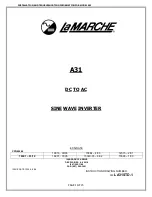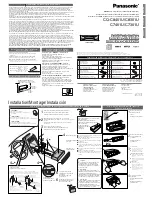
Checking for
Problems
The method we will use to quickly determine if any of your system’s
channels needs more settling time is to simply apply some settling time to
every channel. Use this procedure:
1. First run your system to make a record of its current measurement
performance.
2. Then use the
SAMPle:TIMer
command to add a significant settling
delay to every measurement in the scan list. Take care that the
sample time multiplied by the number of channels in the scan list
does not exceed the time between triggers.
3. Now run your system and look primarily for low-level channel
measurements (like thermocouples) who’s DC value changes
somewhat. If you find channels that respond to this increase in
sample period, you may also notice that these channels may return
slightly quieter measurements as well. The extra sample period
reduces or removes the affected channels coupling to the value of the
channel measured just before it.
4. If you see some improvement, increase the sample period again and
perform another test. When you increase the sample period and no
improvement is seen, you have found the maximum settling delay
that any single channel requires.
5. If the quality of the measurements does not respond to this increase in
sample period, then your system was making good measurements
without the added settling time.
Fixing the Problem
If your system scans fast enough with the increased sample period, your
problem is solved. Your system is only running as fast as the slowest
channel allows but if it is fast enough, that is acceptable. If, on the other
hand, getting quality readings has slowed your scan rate too much, there are
two other methods that will, either separately or in combination, have your
system making good measurements as fast as possible.
Amplifier SCPs
Amplifier SCPs can remove the need to increase settling delays. How?
Each gain factor of 4 provided by the SCP amplifier allows the Range
Amplifier to be set one range higher and still provide the same measurement
resolution. Amplifier SCPs for the HP E1413 are available with gains of 2,
8, 16, and 64. Lets return to our earlier example of a difficult measurement
where one channel is measuring 15.5 volts on the 16 volt range, and the next
a thermocouple on the .0625 range. If our thermocouple channel is
amplified through an SCP with a gain of only 16, the Range Amplifier can
be set to the 1 volt range. On this range the A/D resolution drops to around
31
µ
volt per LSB so the stray capacitances discharging after the 15.5 volt
measurement are now only one sixteenth as significant and thus reduce any
required settling delay. Of course, for most thermocouple measurements,
Chapter 4
Understanding the HP E1313/E1413 145
Artisan Technology Group - Quality Instrumentation ... Guaranteed | (888) 88-SOURCE | www.artisantg.com
















































